
Written by Steven
Edited on
27 February 2025
·
15:40
Which refresh rate do you choose for your gaming monitor?
A monitor with a high refresh rate produces smooth images, which makes it an important part of your gaming setup. As a novice gamer or a non-gamer, you can use a 60Hz monitor or 75Hz monitor. As a more experienced gamer, it's better to use a 144Hz gaming monitor. Are you an e-athlete? Choose 240Hz.
What's the refresh rate?
Your monitor creates the illusion of motion by sequencing still images. The refresh rate indicates the number of images your monitor displays per second. This is indicated in Hertz. A high refresh rate ensures smooth images. Not to confuse with framerate, which is expressed in frames per second (fps). The fps indicates the number of images per second produced by your video card. For a 144Hz refresh rate, you'll need a video card that produces at least 144 fps.
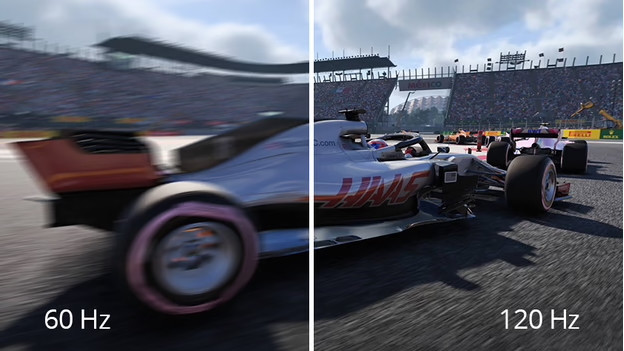

Choose refresh rate
The refresh rate of your monitor has an effect on how your games are displayed, but also on your own performance. It’s important that you choose the right one. The most common refresh rates are 60Hz, 75Hz, 144Hz, and 240HZ. We’ll help you choose.
- 60Hz - For novice gamers who play adventure and strategy games
- 75Hz - For novice gamers who play shooters and racing games
- 144Hz - For experienced gamers and shooter fanatics
- 240Hz - For professional e-athletes
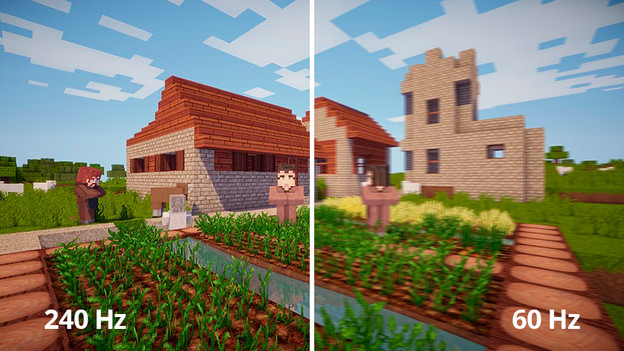
60Hz - For novice gamers
A 60Hz monitor displays up to 60 frames per second. Many games see this as a requirement for gaming. You don't need an expensive video card to produce 60 Full HD frames per second. That's why a 60Hz monitor is great for the novice gamer. For simple games with few moving motions like Minecraft, 60Hz is more than enough. A 60Hz screen is also enough for adventure games like Assassin's Creed and GTA V.
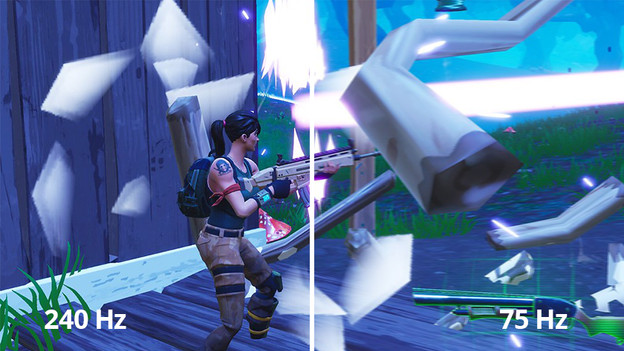
75Hz - For novice gamers who play shooters
A 75Hz refresh rate looks slightly faster than 60Hz. You also get 25% more images. In a shooter or racing game, this can be just what you need to defeat your opponent. A skilled gamer will experience some lags with 75Hz, but you won't notice this as a novice gamer. A 75Hz gaming monitor is a good option if you're a novice gamer that plays shooters or if you simply want more than 60Hz without spending a lot more money.
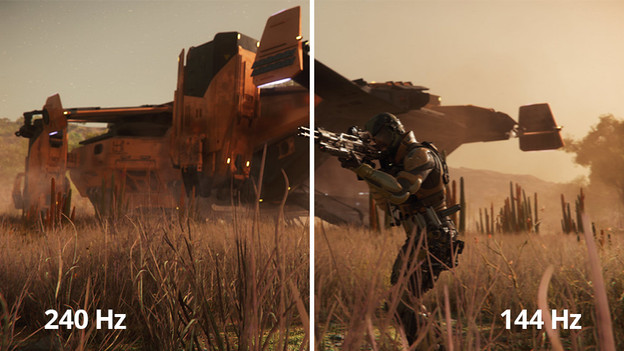
144Hz - For experienced gamers
A 144Hz monitor displays images very smoothly. This is mostly beneficial if you're an experienced gamer that plays shooters or other fast games like Call of Duty. You can clearly see the difference between 60Hz and 140Hz. While a fair amount of screen tearing is visible with 60Hz, this is barely the case with 144Hz, if at all. You'll have to spend a little more money on a 144Hz monitor, but you'll get much better graphics.
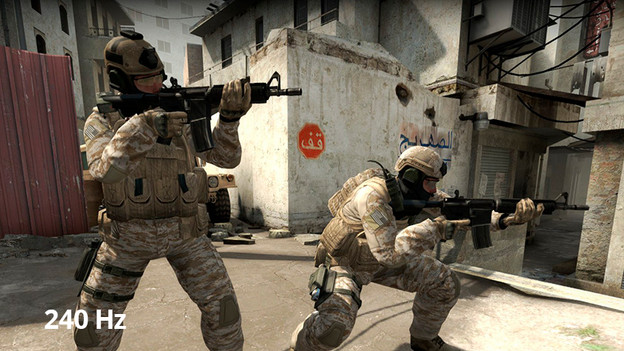
240Hz - For diehard gamers and e-athletes
The 240Hz ensures life-like motions. The difference between 240Hz and 144Hz is difficult to see, unless you're a diehard gamer or participate in e-sports tournaments. Because even though this isn't clearly visible, an experienced gamer will notice this in the number of kills. The 240Hz ensures a sharper image between refreshing and more up to date information on your surroundings. So, are you a competitive gamer or do you aspire to be one? A 240Hz monitor is the one for you.

PlayStation 5 and Xbox Series X
The PlayStation 5 and Xbox Series X display a maximum of 120 fps. To get the most out of your console, choose a gaming monitor with a refresh rate of 120Hz or higher. A PlayStation 5 and Xbox Series X don't have a DisplayPort connector, so the monitor should have HDMI 2.1. Keep this in mind, because HDMI versions before 2.1 only support 60 fps at 4K resolution.

G-Sync and FreeSync
A 144Hz gaming monitor with a video card that produces 144 fps should display a perfectly smooth image. In reality, the number of fps delivered by a video card changes every second. This causes irregularities on the screen, such as stutter or screen tearing. The solutions for this are G-Sync and FreeSync. These types of adaptive sync ensure that the monitor adapts the refresh rate to the number of fps of your video card. As a result, this dynamic duo will run in sync without screen tearing.

Required hardware
The rule of thumb is quite simple. The higher the amount of frames per second, the more powerful your video card should be. That's why you need a better video card for 144Hz/144 fps gaming than for 60Hz/60 fps gaming, for example. The resolution is also important. A 4K resolution demands more from your video card than Full HD. Choose a monitor that matches your video card and gaming type.
Article by Steven
Monitor Expert.
